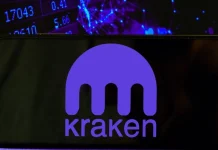
- Stripe unveils Open Issuance, allowing firms to launch stablecoins with minimal coding.
- The company applies for federal and New York trust charters to comply with U.S. regulations.
- Stablecoin adoption surges 57% as Stripe positions to rival Circle and Tether.
Stripe has taken a bold step into digital finance by unveiling a suite of tools that enable businesses to create and manage their own stablecoins while simultaneously preparing to operate under direct U.S. banking regulations.
The fintech leader announced these developments at its annual product showcase in New York, where more than 40 upgrades were revealed. Stablecoins and artificial intelligence were placed at the center of its strategy, signaling how Stripe intends to redefine online commerce.
A New Platform for Stablecoin Issuance
At the heart of Stripe’s push is Open Issuance, a platform designed to let any company roll out its own stablecoin within days using minimal coding. The product, powered by Bridge, a $1.1 billion acquisition earlier this year, provides businesses with the ability to mint and redeem tokens without relying on third-party issuers.
Companies using Open Issuance can choose between reserve structures based on cash or treasuries, supported by partners such as BlackRock, Fidelity, and Lead Bank. This flexibility ensures that issuers retain control of their yield while rewarding their own customers. Unlike traditional models where external stablecoin providers hold the returns, Stripe enables businesses to monetize their deposits directly.
Significantly, all coins issued through the platform will be fully interoperable, solving one of the major liquidity challenges in digital asset markets. To demonstrate this, firms including Phantom and Hyperliquid have already announced new stablecoins to be launched on the system.
Expanding Business Capabilities
Besides enabling issuance, Stripe is enhancing its merchant services to help firms adopt stablecoins more seamlessly. Businesses can now accept recurring payments in tokens, settle balances in either cryptocurrency or fiat, and spend these reserves using locally issued cards. The company’s Optimized Checkout Suite now integrates stablecoin payments by default, making adoption easier for e-commerce players.
The move comes as demand rises. The supply of stablecoins has increased by 57% over the past year, reflecting the broad adoption of stablecoins by both institutions and retail investors. Analysts predict that this space could reach trillions of dollars within the next decade, thereby presenting new opportunities for the financial services industry.
Stripe has also expanded beyond stablecoins with additional partnerships. Its joint efforts with Visa and startup Fold led to the launch of a Bitcoin rewards credit card, allowing consumers to accumulate BTC with every purchase. This approach highlights how Stripe is embedding digital assets into mainstream spending habits.
Banking Charter and Regulatory Ambitions
To operate these services under apparent oversight, Stripe is preparing to apply for a federal banking charter with the Office of the Comptroller of the Currency (OCC). The firm is also planning to secure a trust license with New York’s Department of Financial Services, aligning with one of the most rigorous regulatory regimes in digital finance.
By pursuing these licenses, Stripe positions itself ahead of anticipated U.S. stablecoin rules. Its executives emphasized that the company does not aim to release a Stripe-branded token. Instead, it will serve as the infrastructure provider, charging a service fee while allowing businesses to keep their own interest income.
These steps mirror similar moves across the sector. Stablecoin issuers Circle and Paxos, along with Ripple, have each filed for federal licenses, signaling that blockchain firms are transitioning from the periphery into the regulated financial system. This convergence sets up a competitive environment for incumbents like Tether, which currently dominates the market with over $175 billion in circulation.
Stablecoins and the Next Digital Economy
Stripe’s broader vision extends beyond digital money. The company also introduced solutions for what it calls agentic commerce, where artificial intelligence systems transact on behalf of users. Through the Agentic Commerce Protocol, Stripe and OpenAI are working to standardize interactions between AI agents and merchants.
In this emerging landscape, payments are no longer limited to human-to-human but are agent-to-agent. Hence, Stripe is preparing the businesses for this shift with hybrid billing models, advanced fraud protection, and slick cross-border payment tools.
Thus, the scope of Stripe’s activations extends beyond the digital economy, as it aims to transform it. With a few regulatory applications under review and with a new generation of tools on the market, the company is positioning itself as the missing link between the worlds of traditional finance, blockchain innovation, and AI-powered commerce.













